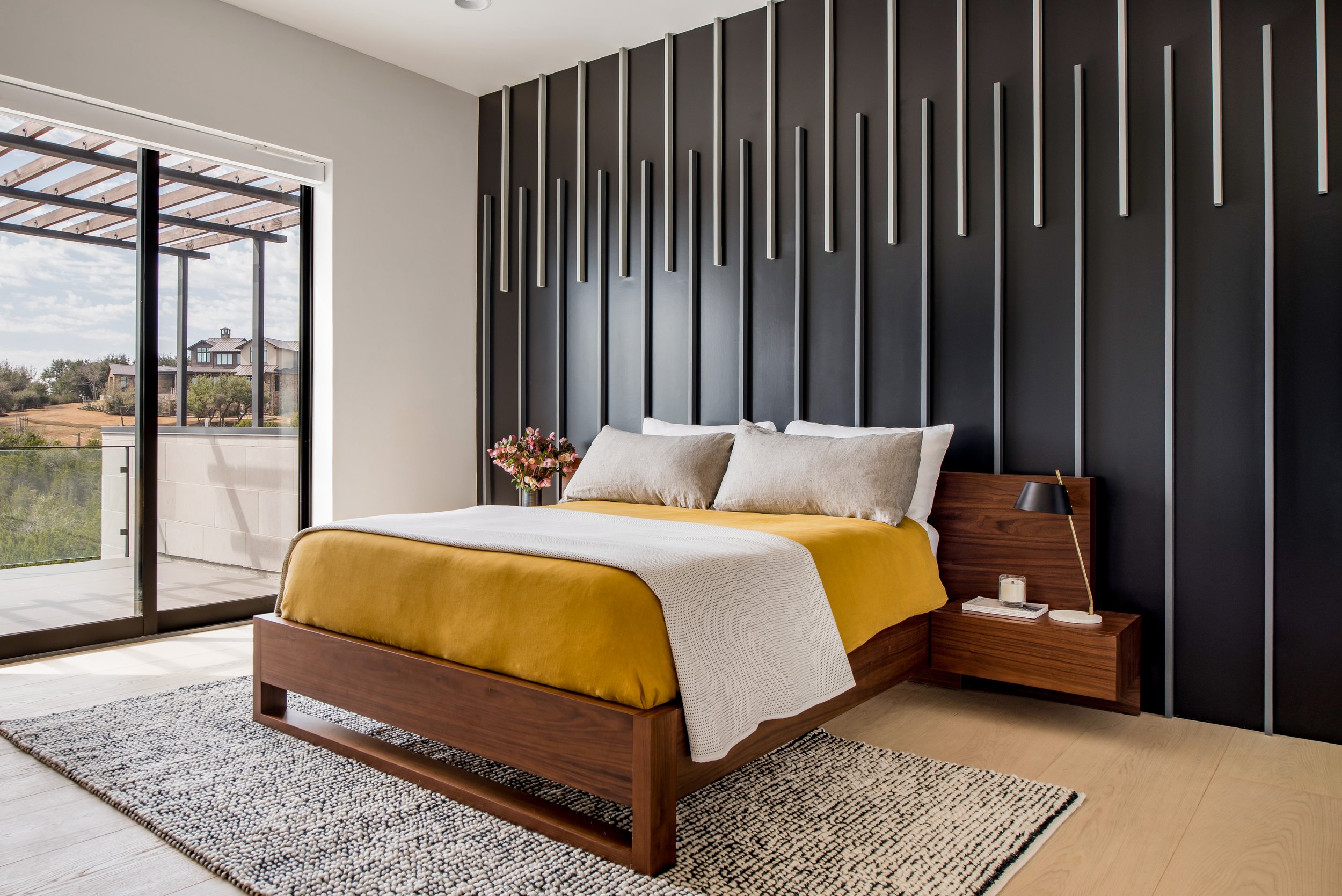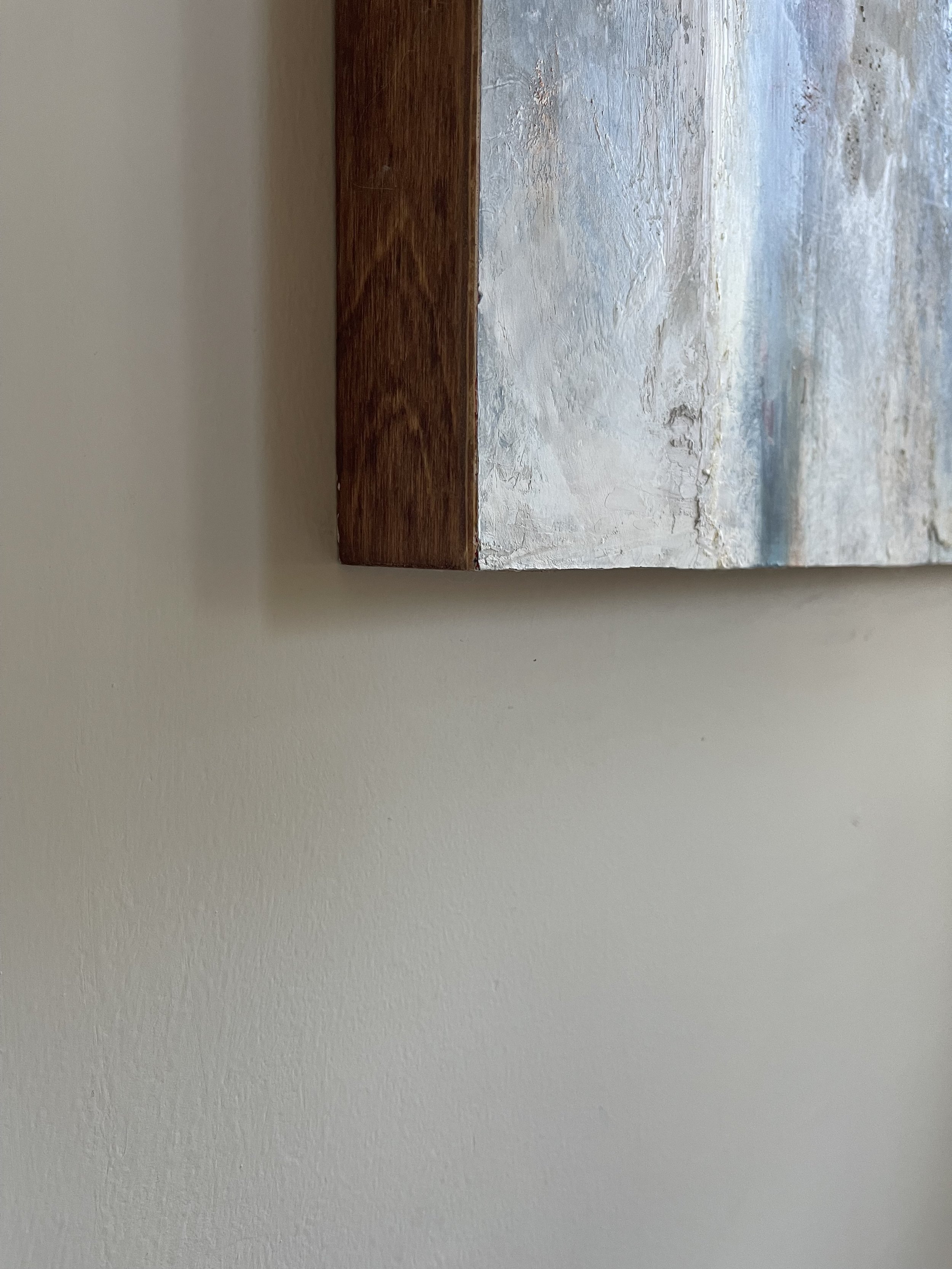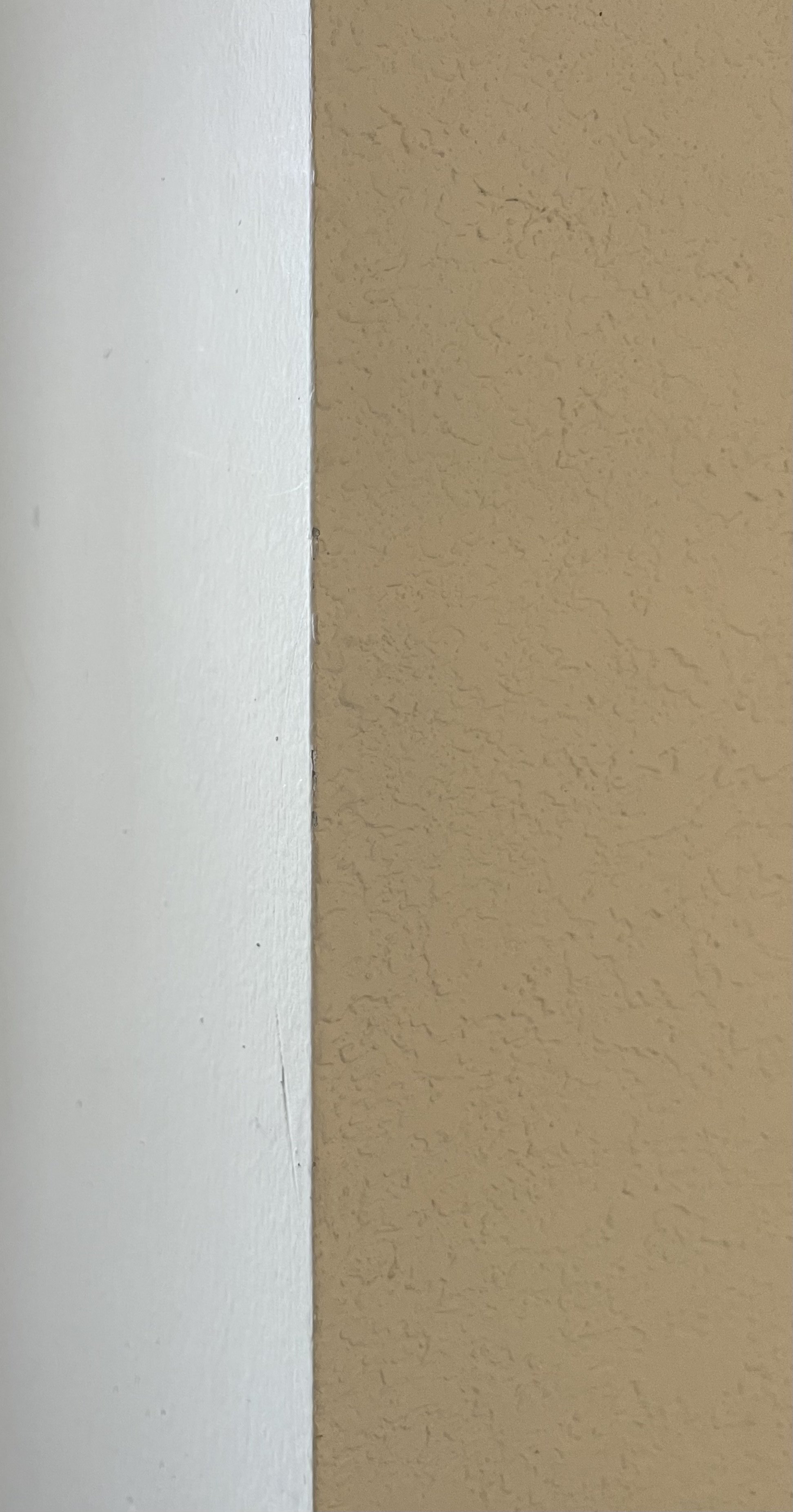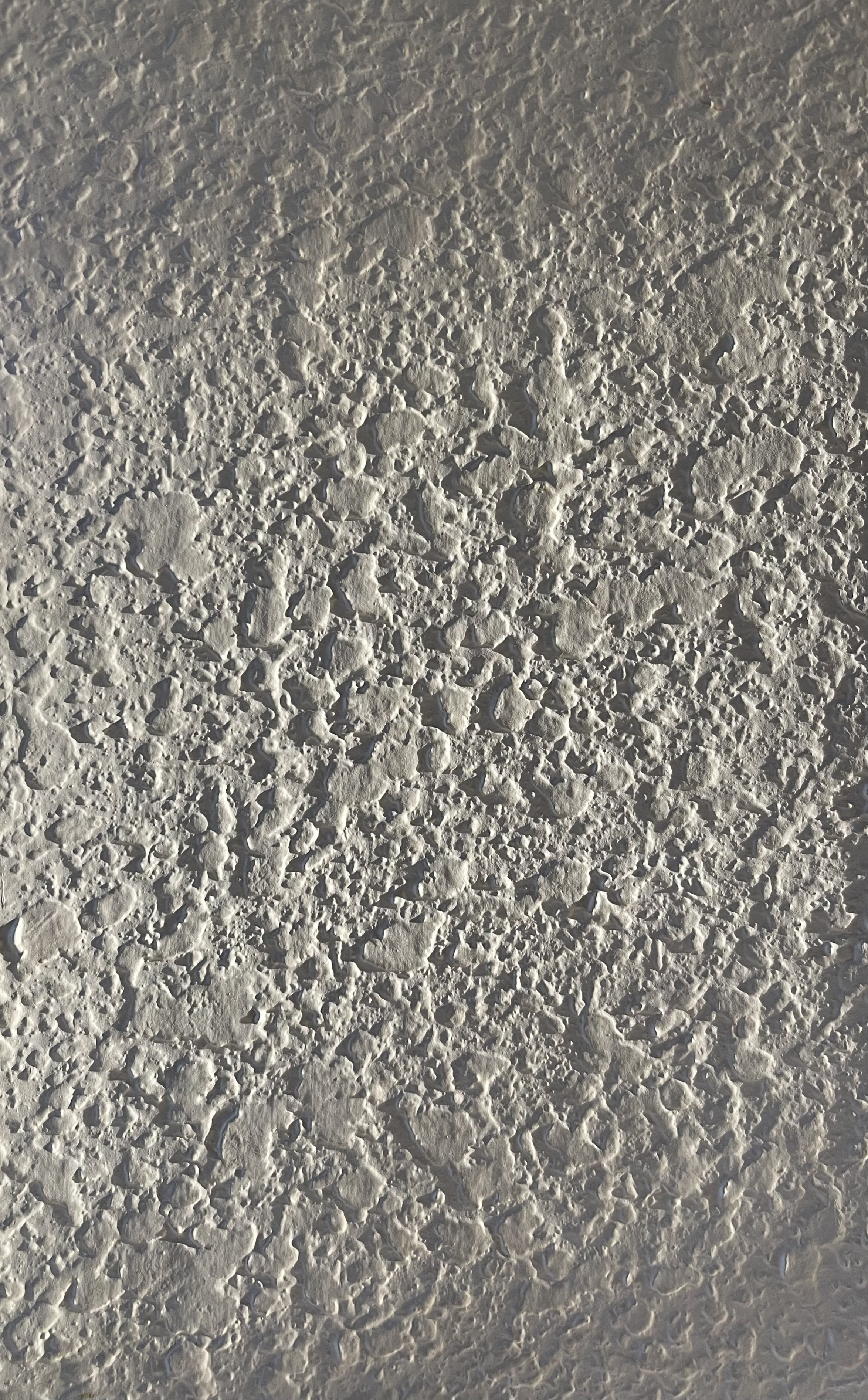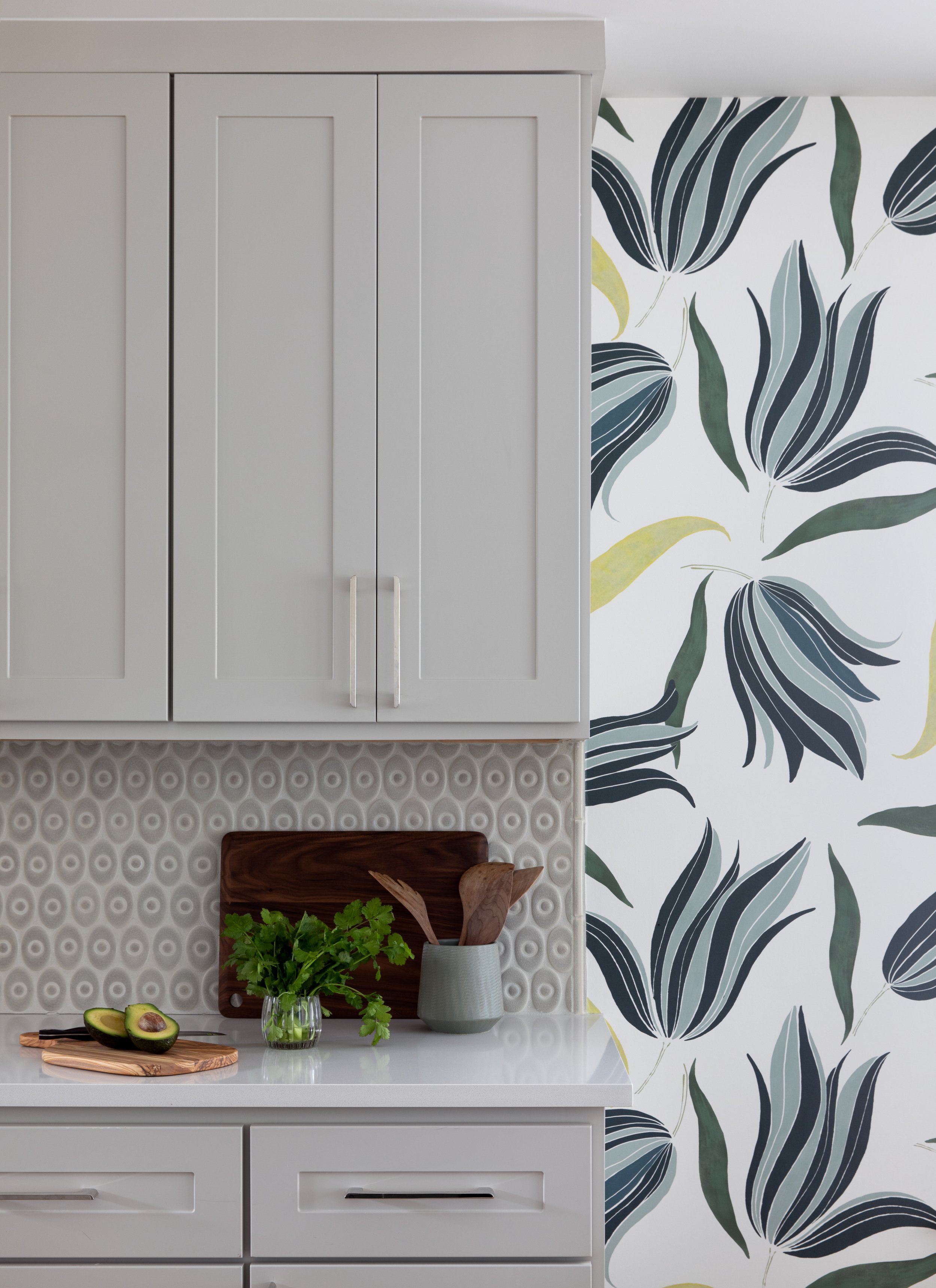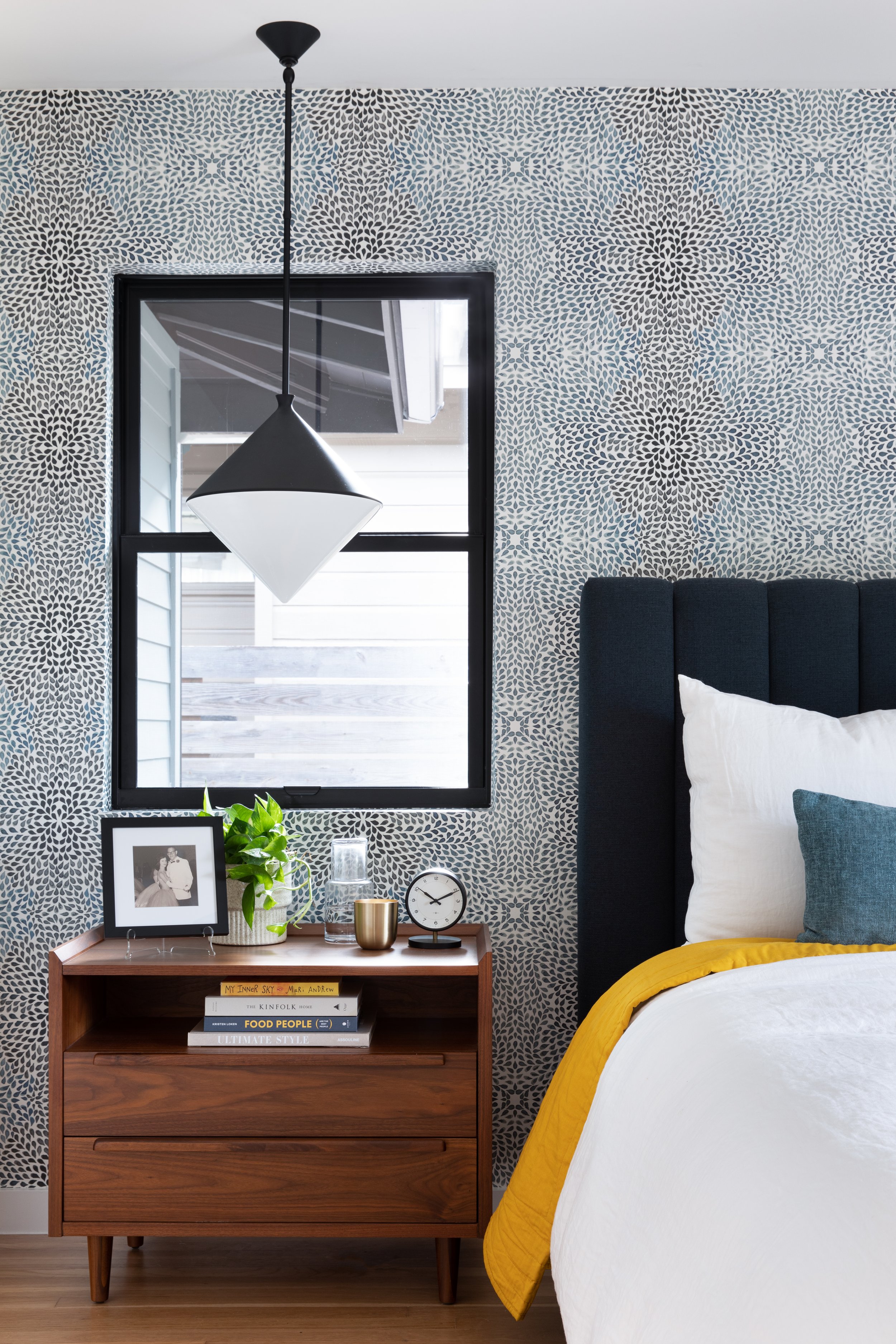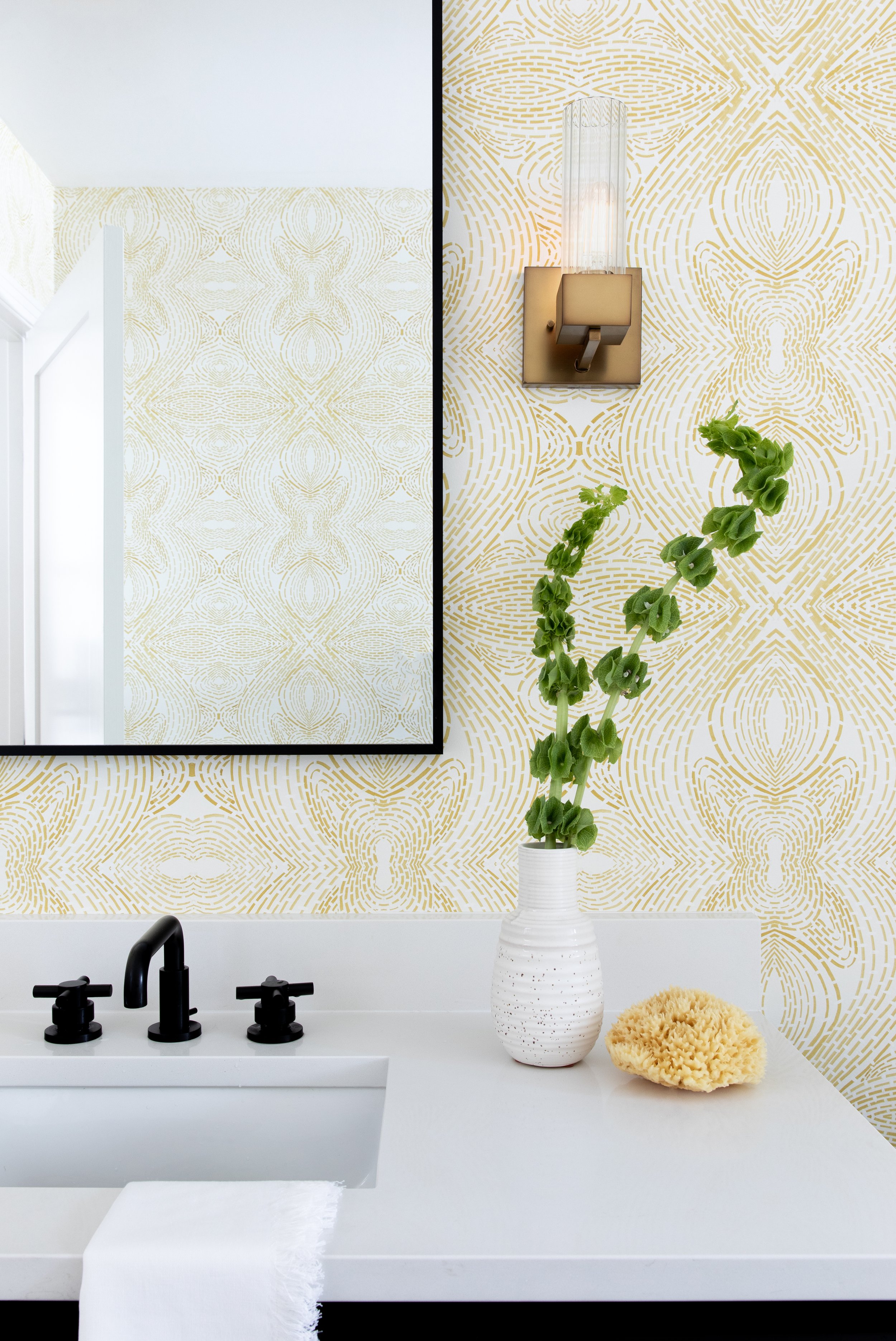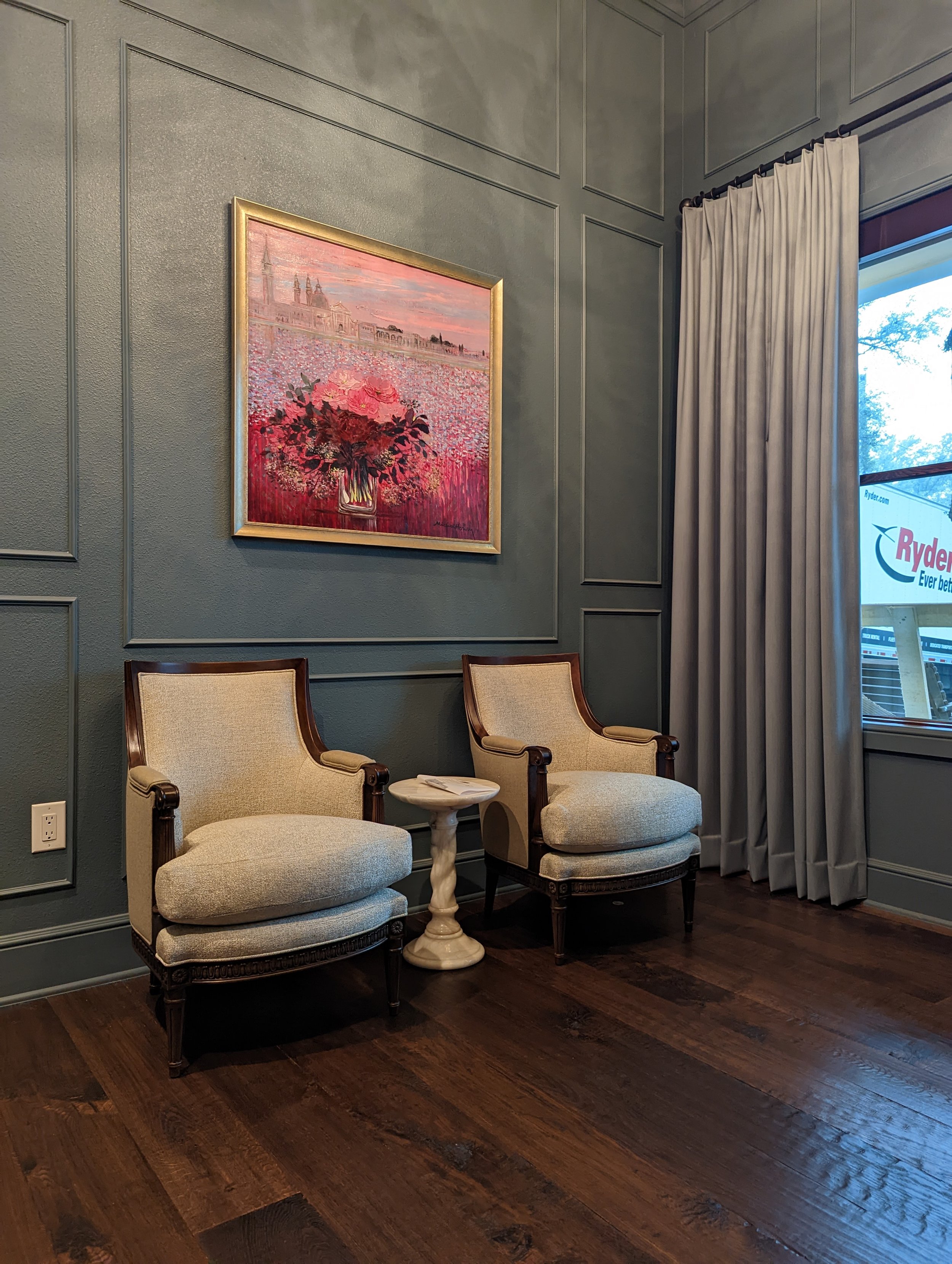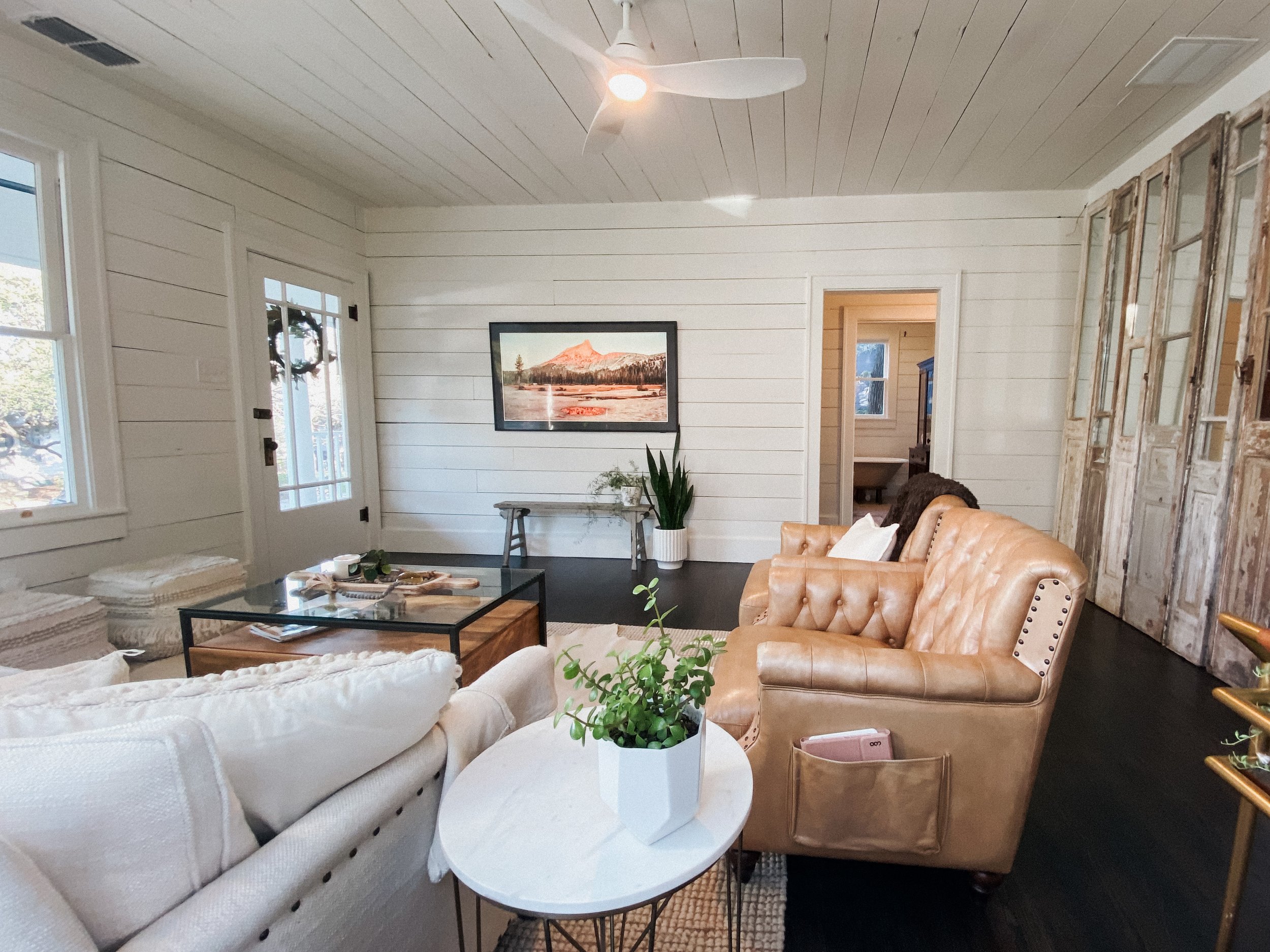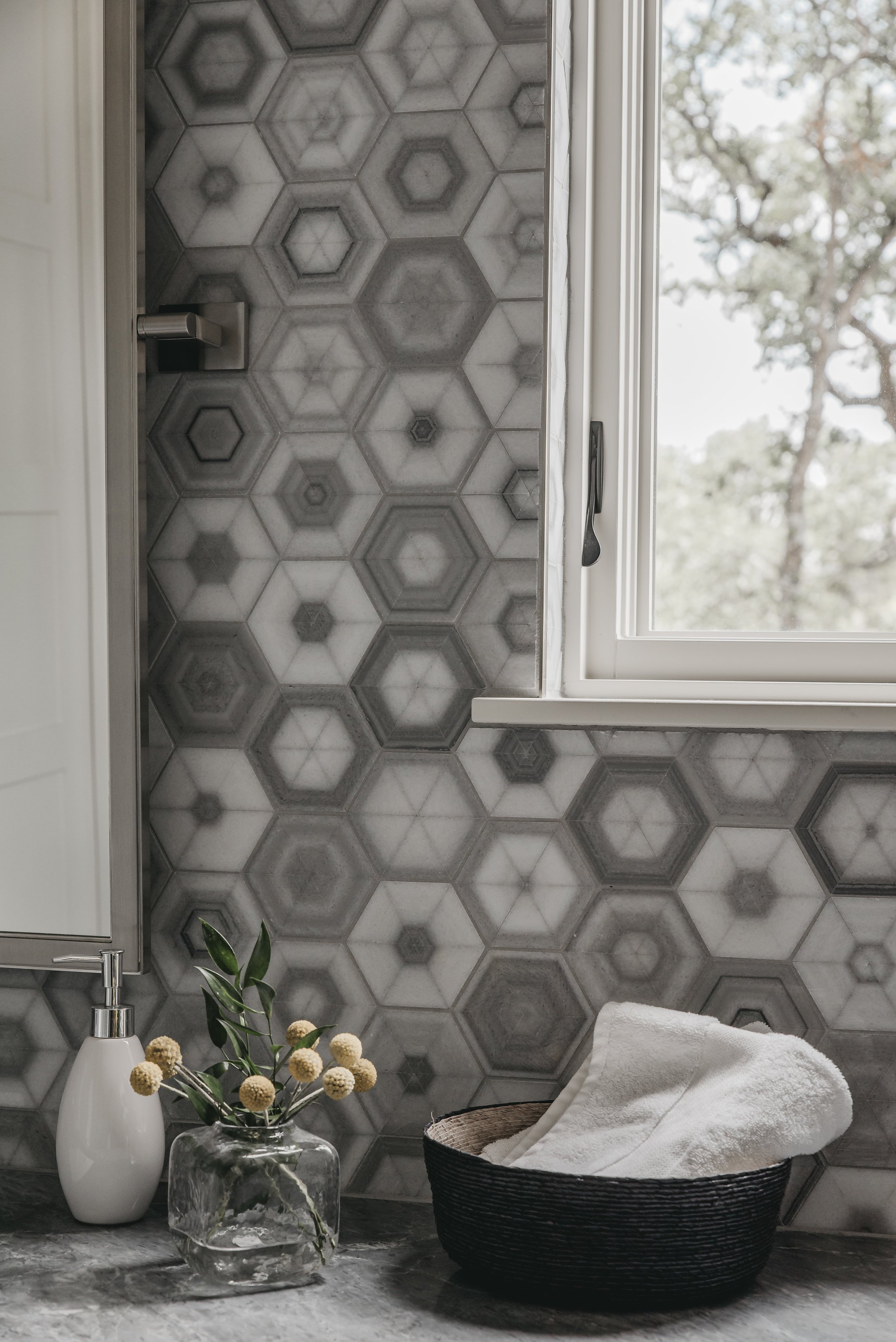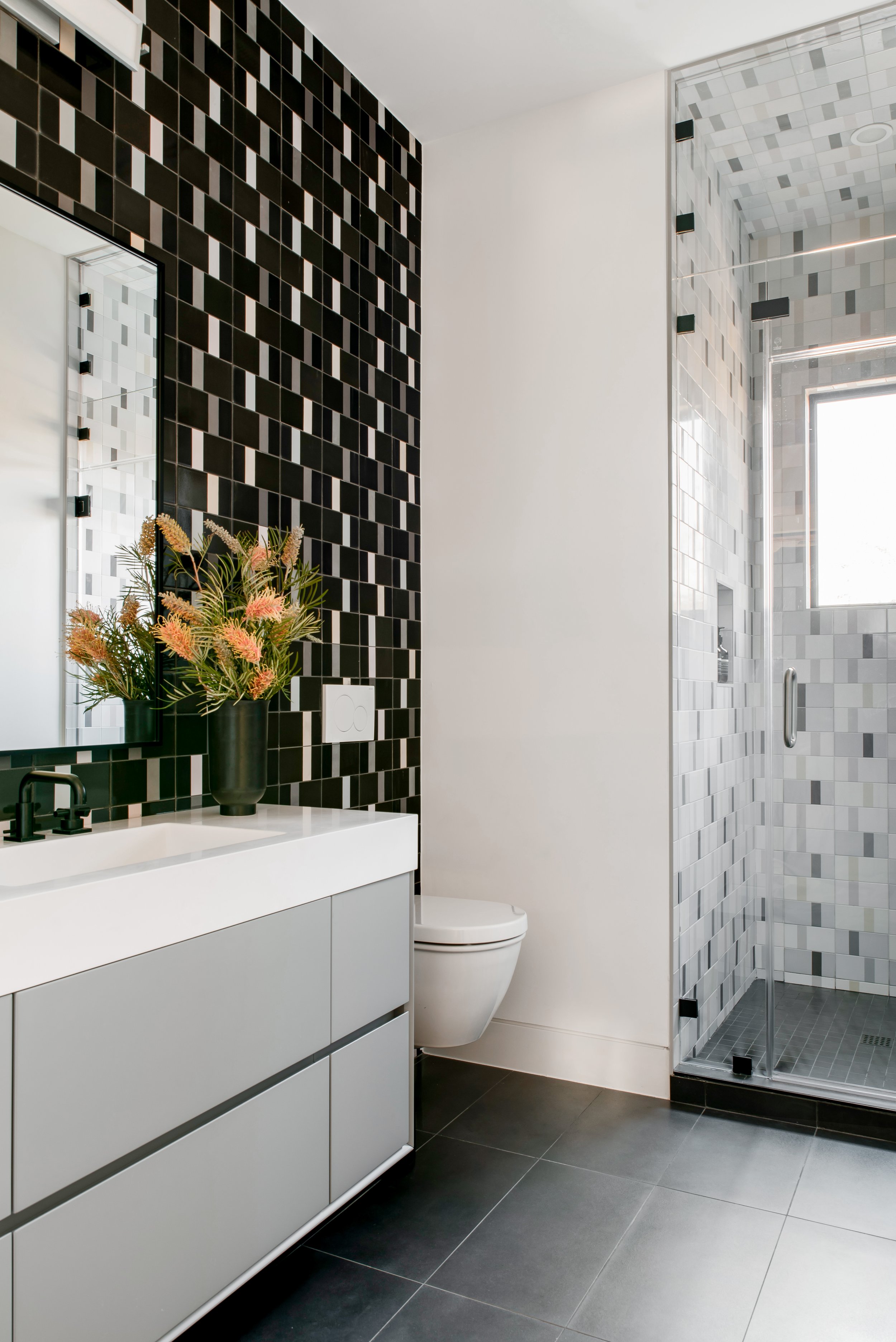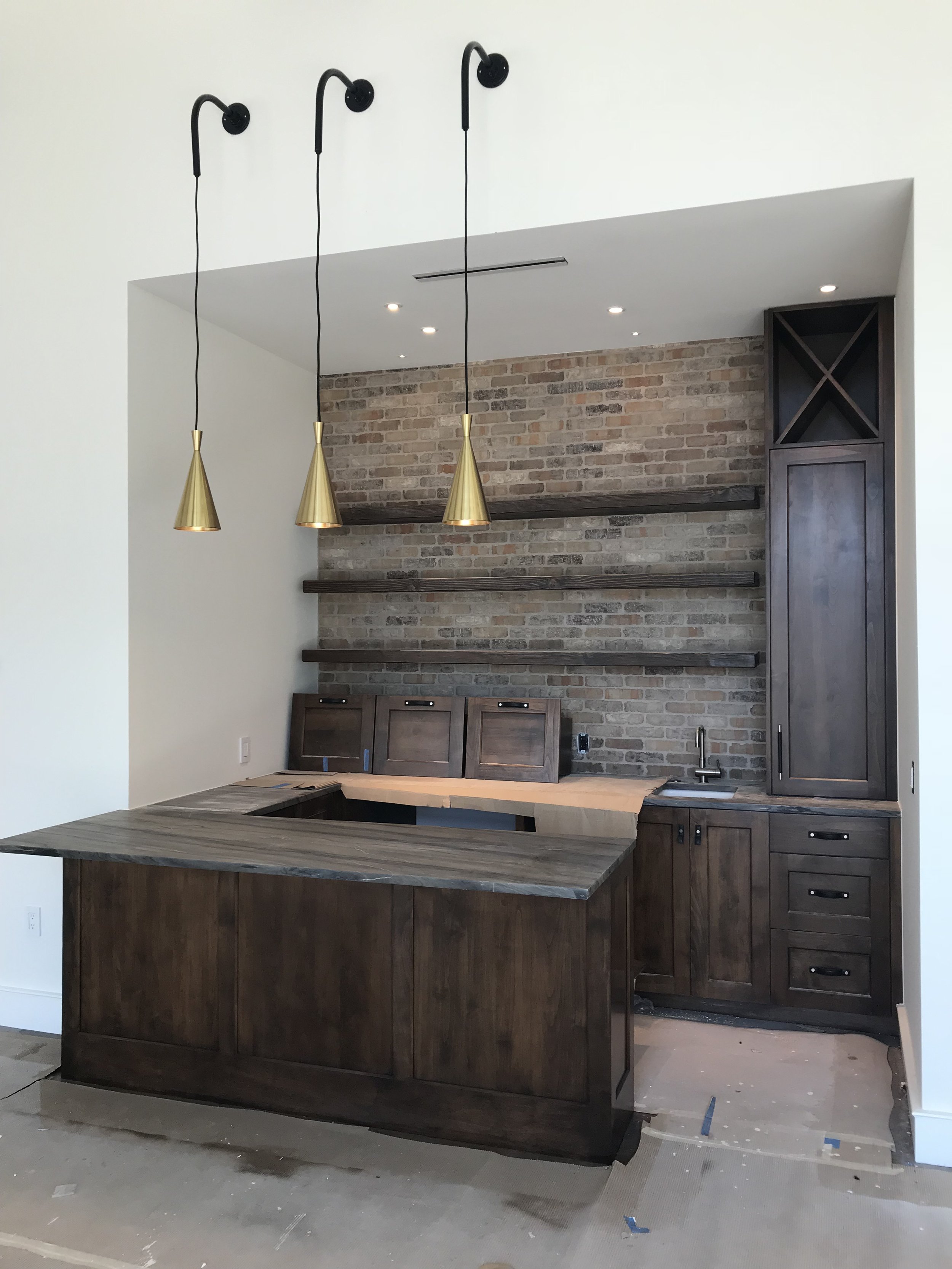Wondering About Wall Finishes?
In my years as an interior designer I’ve found that clients know little about different types of wall finishes, however, once we dive in, it turns out they care deeply about the nuances between them. Are you wondering about wall finishes? I want to prepare you to make the right decisions, whether building or renovating, so I’m sharing my guide with everything you need to know. Let’s take a deeper look at drywall textures, wallpaper options, and other applied materials.
A Guide to Selecting Wall Finishes for Your Home
When selecting wall finishes, consider the available materials - each one has a different style, feel, durability level, and price tag. Educate yourself on what’s out there so you can plan accordingly.
Different Types of Wall Finishes
Wall finishes fall into two main categories: drywall surfaces and non-drywall surfaces.
Drywall Surfaces
Drywall surfaces are standard finishes in residential architecture, providing a blank canvas to take any paint color you can imagine. However, your design decisions don’t end with picking a color. You also need to consider drywall textures and corner finishes.
Wall Textures
Wall texture is a coating of joint compound, also called mud, used to hide drywall joints. While many clients take notice of wall color and have strong opinions on their favorite hues, many don’t realize there are different wall texture options available that contribute to a home’s overall look and feel.
In the last few years I’ve discovered that wall textures tend to vary by region. For example, this layer is a step often skipped for homes in the Northeast. Perhaps because many homes are historic and textures were developed later to hide drywall imperfections. Here in Texas, it’s common to see builders apply a range of textures. So, if you’re building here, you need to make a selection with your contractor and designer.
Levels of Wall Texture
For the heaviest applications, you’ll hear of hand troweled textures such as Knockdown, Monterrey Drag, and others which resemble rough stucco. These thick finishes are great for Mission Style and Rustic homes. Personal confession - in the 90’s I actually went on a DIY adventure and troweled heavy texture onto a few of my walls because at the time I wanted my traditional home to look more Mediterranean. Remember my post about when my home developed Design Personality Disorder? Yep, that’s the time.
In the middle range of thickness, you have Orange Peel which resembles its namesake. Orange Peel is one of the most commonly used drywall textures because it is style-neutral and cost-effective while maintaining a relatively smooth look. There is even a version called Fine Orange Peel, which is the lightest sprayed on texture that can be achieved.
The smoother applications range from Level 0 to Level 5, getting smoother with fewer imperfections every step up the scale At the highest end, you have the Gallery Finish (Level 5). It is considered a premium option due to the amount of craftsmanship and labor that goes into making the surface perfectly smooth. As a result, it is more expensive. Clients with contemporary homes often want smooth Gallery Finish walls, but it’s important to recognize it comes at a price and must be accounted for in the budget. When they learn of the price adder, some clients will default to Fine Orange Peel.
Drywall Corners
When finishing drywall corners, you must decide between squared or rounded corner beads. While squared corners work in a variety of home styles, they are especially relevant to contemporary designs. I always opt for square corners in new construction projects because I prefer simplicity. Additionally, it is easier to change the wall color or finish from one plane to the next. Rounded corners tend to be used in Mission, Spanish Colonial, and Mediterranean architecture. Some people prefer rounded corners because they are less prone to chipping and have a softer feel. However, finding breaks for paint colors and applying moldings can be challenging.
Level 3 Texture, Square Corner Where Level 3 Meets Knockdown Texture, Knockdown Texture
Pro-Tip: Drywall Decisions are Different for New Builds and Renovations
Depending on whether you are working on a new build or a renovation, you might approach your drywall texture and corner decision-making process differently. You have every option available for a new construction home because you’re starting from scratch. However, existing finishes need to be considered in renovation projects. In renovations, changing wall textures often requires installing new drywall. It’s a sneaky consideration most clients don't plan for, especially if they were hoping to minimize the scope of a surface refresh.
Non-drywall Surfaces
Wall finish options go way beyond drywall. Bringing in other materials can provide a rich design element and add variety to standard wall treatments. At Laura Burton Interiors, we usually include at least one interesting finish in every space, whether on the walls or the ceiling. Here are a few to consider:
Wallpaper
I am often asked - is wallpaper back? The answer is - YES! However, this wall finish has come back with so many more choices than in the ‘80s and ‘90s. Wallpaper can inject bold color and pattern into a room or simply offer a subtle texture variation. There are endless patterns and material combinations, including classic printed paper, grasscloth, foil, vinyl, and bamboo. Unlike other surfaces, you can easily wipe wallpaper clean, providing easy maintenance. In addition,, it’s often more economical than other accent options such as tile or wood.
Wallpaper Selections
Plaster
Plaster is made by combining fired limestone and water. It’s often referred to as Venetian Plaster or Lime Plaster. Once applied to a surface (typically unfinished drywall), it dries smooth, creating a hard surface (did I mention it’s made of limestone?). I love the touch of plaster and the iridescent character it adds to a room when it catches the light. Plaster has a layer of texture, depth, and beauty beyond standard drywall. Additionally, you can specify waterproof plaster, creating an alternative to tile or counter materials in a wet application.
Plaster Accent Wall and Range Hood
Other Applied Materials
In addition to wallpaper and plaster, there are many more applied materials which make for stunning wall finishes.
Paneling
There are different forms of paneling to suit varying design styles. Common applications include applied molding (i.e. direct to drywall), wainscoting, tongue and groove, shiplap, bead-board, and board & batten. Paneling can also be stained or painted depending on the desired look.
Traditional Applied Molding, Shiplap, T&G ceiling
Tile
Tiled walls are perfect for wet areas, including bathrooms, mudrooms, and kitchens. There’s a range of tile styles available, from colorful cement tiles to durable porcelains to natural stone. You can use tiles to create a full accent wall or a half wall.
Tile Accent Walls
Masonry
Brick or stone masonry can be applied as a veneer, but I prefer to carry in the full thickness material from the exterior. Due to the thickness, these materials should be planned before framing, but incorporating masonry walls is a great way to connect the home's exterior with interior spaces.
Charcoal Lueders Masonry Wall, Brick Accent Wall
Pro-Tip: Consider Style and Budget Early On
The types of wall finishes you choose will impact your home’s look and budget. So, consider selections early in the design process. Each surface treatment will drive a specific style and come with a different price tag. For example, applied molding leans toward traditional, whereas shiplap is associated with farmhouse styles. Don’t fail to take advantage of this easy and economical way to set your home apart.
The Bottom Line: Select Wall Finishes to Make an Impression
As you can see, there are so many types of wall finishes available. Think about how you can introduce new textures, materials, and patterns, into each space, and transform your house into a home.

